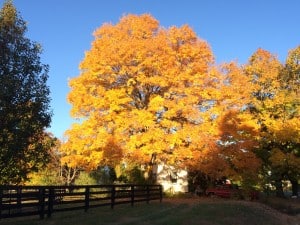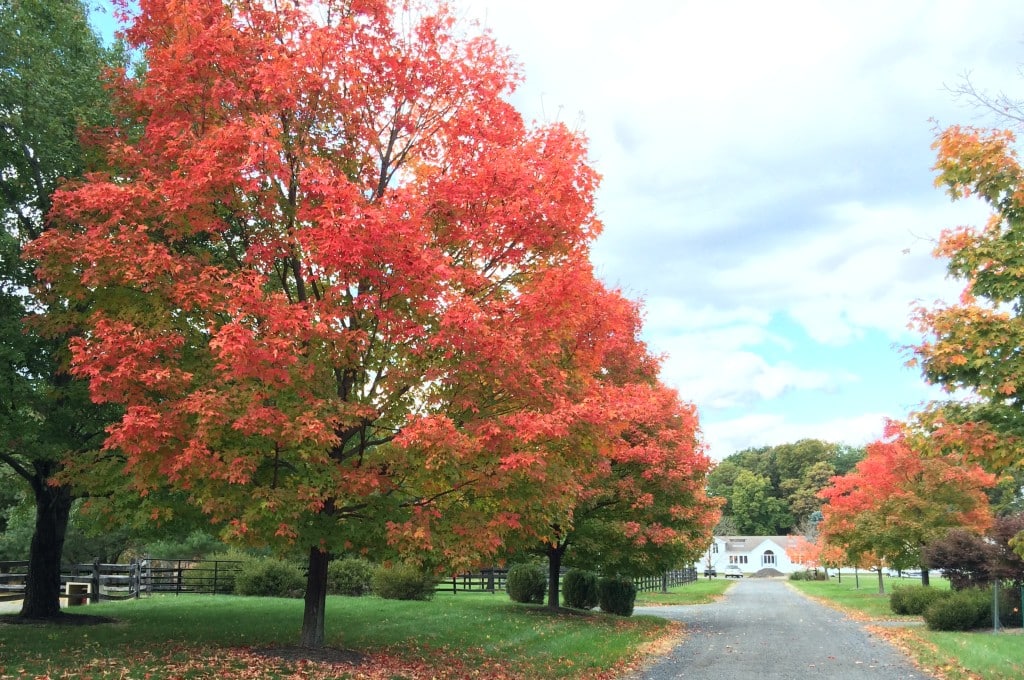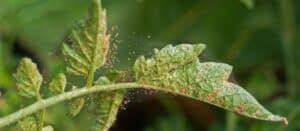Weekend chores can wait, but the Autumn colors likely won’t.
So, …. whether by foot, bike or car, make plans to get out this weekend to enjoy the peak display of fall colors.
We are fortunate to live in a part of the country that gets to witness this rainbow of colors. Due to the prolonged drought period, we expect to see leaf fall begin a little sooner this year.
Why Leaves Change Color: 3 Things Influence the Color of Autumn Leaves
1. Longer Nights
As the nights get longer, the lack of daylight triggers photosynthesis and the production of chlorophyll to slow down and eventually stop.
The lengthening dark period each day also stimulates the growth of special cells where the leaf meets the stem called the abscission layer. This layer helps plants start to preserve and store nutrients by blocking the flow of minerals from the roots up into the leaves.
Length of night is the single biggest catalyst in the start of color change.
 2. True Underlying Leaf Pigments
2. True Underlying Leaf Pigments
Leaf pigments differ by tree or plant species and are revealed once the green chlorophyll disappears in fall.
Carotenoids give leaves their orange pigments, while xanthophylls, (oxygenated carotenoids), are responsible for the yellows. Carotenoids are present in leaves throughout the growing season, but are masked by chlorophyll. Anthocyanins, which give leaves their red and purple pigments, are not usually present during the growing season, but rather are manufactured by sugars produced in the leaves during autumn.
3. Environmental Weather Conditions
Like temperature, sunlight, and moisture, weather conditions affect the length and intensity of the color display.
Cool night temperatures along with an abundance of sunny days increases the amount of sugars produced in the leaves. The developing abscission layer traps these sugars in the leaves, giving them their brilliant crimson colors.
Prolonged drought periods can cause the abscission layer to begin developing earlier. When this happens, the leaves begin to fall sometimes before they’ve ever had a chance to unveil their autumn colors.
Freezing temperatures can bring an early end to colorful foliage so get out and enjoy!
With leaf fall begins Nature’s nutrient cycling process. These fallen leaves become food for the billions of soil organisms in the Soil Food Web. They, in turn, convert shredded leaves into soil nutrients that plant and tree roots can take up next Spring.
So this Fall, instead of raking and removing all the fallen leaves, consider mulch-mowing them and leaving them to replenish the soil, reducing some of your fertilizer requirements next season.
GET THE LATEST NEWS
Subscribe to the Organic Plant Care Newsletter and get timely and helpful tips and updates monthly.
There's no spam - we promise!







